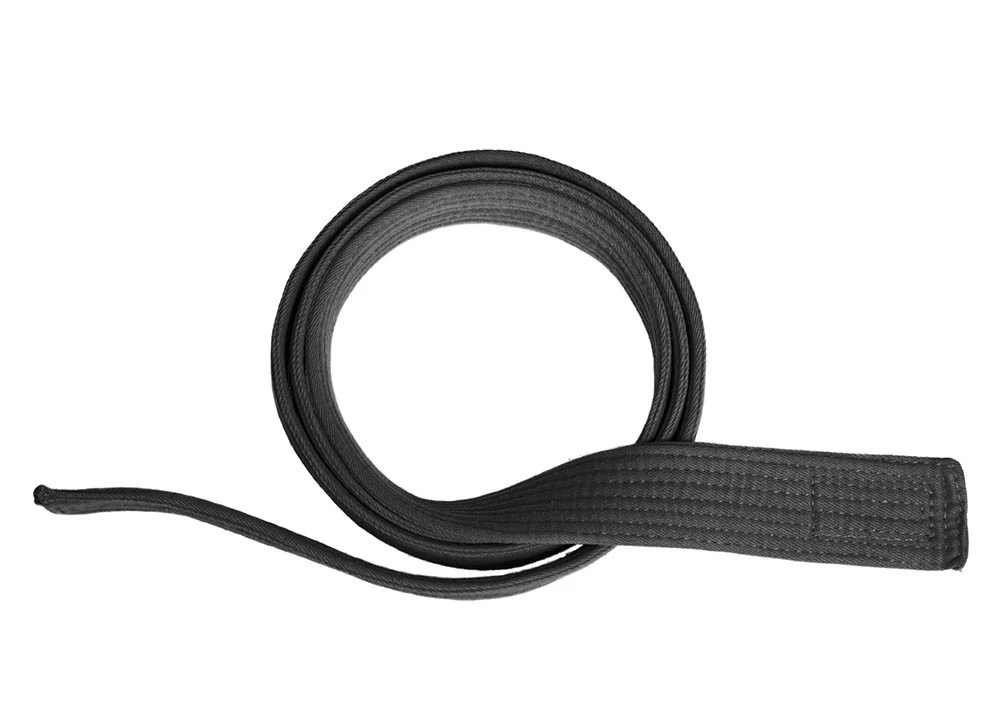The domain of problem-solving and process improvement is rich with methodologies. Each having its own unique approach and cascading benefits.
Out of these — 8D Problem Solving and Lean Six Sigma stand out as prominent frameworks. 8D as popularly known as the Eight Disciplines, is a structured approach majorly used to address complex issues, ensuring they are resolved comprehensively.
On the other hand, Lean Six Sigma is a hybrid methodology that combines Lean’s efficiency-driven principles with Six Sigma’s data-driven quality control.
Problems
Humans usually use the word problem to indicate an unwanted difference between a desired state and actual state of any situation. Problems vary in complexity, impact, and to what extent you can solve them completely at the root.
8D is about fixing the process
Everything we humans do is a process, cooking a soup, driving a car or making a telephone call. We transform the input into a desired output. In essence all our problems originate from Thinking Processes or Executional Processes.
Lean Six Sigma is like guarantee of quality, it is like hitting the bull’s eye every single time.
Historical Overview
The exact history of the 8D method can be traced back to the US military, with the military standard of 1520C (Department of Defense,1986). Moving further it was Ford Motors which played an instrumental role in propagating it further.
Lean Six Sigma happened in the 1970s, Motorola’s TV factory (remember, pre-cell phones!) saw a Japanese takeover transform production. With the same workforce and machinery, defect rates plummeted by 20 times thanks to a revamped approach by incorporating stringent management.
This harsh lesson in quality control paved the way for Motorola’s future success.
In the 1980s, an engineer named Bill Smith, wasn’t happy with the mistakes happening in the factory. And that is how Six Sigma came into picture. Lean Six Sigma offers a powerful combination of methodologies that can dramatically improve your bottom line.
Core Principles of 8D Problem Solving and Lean Six sigma
8D revolves around identifying and correcting the root cause of a problem, it is a structured approach with emphasis on problem solving. It helps to correct mistakes and causes which are repetitive in nature.
Lean Six Sigma on the other hand has a laser focus. Lean Six Sigma isn’t a one-time fix. It fosters a culture of continuous improvement, encouraging employees to constantly seek ways to optimize processes. This ensures your business stays ahead of the curve.
Defining the 8 Ds of the methodology
- D1 – Defining the problem
- D2 – Forming a cross functional team with required knowledge and Skills
- D3- Develop interim containment plan (ICA)
- D4- Define and verify root cause analysis (RCA)
- D5- Choose and verify permanent corrective actions (PCA)
- D6- Implement and Validate PCA
- D7 – Prevent re-occurrence
- D8 – Recognize team and individual contributions
D-M-A-I-C Methodology

D – Defining the management Problem
M- Measuring the current state of the process and performance
A- Analysing the various improvement parameters
I- Improving the current state of processes
C- Controlling the Six Sigma level of proficiency achieved
Six Sigma is all about achieving near-perfect quality, but sometimes you’re not improving an existing process, you’re creating a brand new one! That’s where DMADV comes in.
Design it right and build it right.
If you’re looking to fix something that’s already up and running, DMAIC is your go to method.
If you’re developing something from scratch then it has to be DMADV (Define- Measure- Analyse- Design- Verify)
Areas of Application – 8D Problem Solving vs Lean Six Sigma
8D Problem Solving is predominantly used in industries where safety and reliability are paramount, such as automotive, aerospace, and manufacturing.
Lean Six Sigma finds its application across diverse sectors, including healthcare, finance, manufacturing, and services, due to its versatility in addressing process inefficiencies.
Strengths and Weaknesses of 8D Problem Solving and Lean Six Sigma
Strengths
8D Problem Solving is a systematic and structured approach, which basically hovers on very meticulously driven – Team Work as multiple cross functional domains are involved. It fosters an environment of knowledge sharing and giving equal importance to all the participating members.
Lean Six Sigma on other hand is a data driven approach. Lean Six Sigma offers a comprehensive strategy for improvement.
Targeted Problem-Solving: Six Sigma helps you identify the root causes of defects and inefficiencies. Lean then provides the tools to eliminate them and prevent their recurrence.
Weaknesses
8D Problem Solving relies heavily on resources and expertise of the team members.
Secondly, it is constricted to very strict timelines which needs to be followed for successful execution.
Lean Six Sigma projects can become very complex and the it relies a lot on statistics so making it dauting for many organizations to implement it successfully.
Integration of 8D Problem Solving and Lean Six Sigma
8D’s strong emphasis on root cause analysis can enhance the effectiveness of Lean Six Sigma projects, ensuring that solutions address the fundamental issues.
How Lean Six Sigma Can Complement 8D Problem Solving?
Lean Six Sigma’s statistical tools and focus on process optimization can augment the 8D methodology, providing a more comprehensive approach to problem-solving.
Sample Implementation of 8D and Lean Six Sigma approaches
Case 1: A food manufacturing company faced recurring equipment failures leading to higher changeover times and costs. By applying the 8D methodology, they identified a flawed maintenance process as the root cause. Implementing a revised maintenance schedule led to a significant reduction in downtime.
Case 2: A healthcare provider implemented Lean Six Sigma to streamline patient flow in their emergency department. By analysing data and reorganizing processes, they achieved a 30% reduction in waiting times leading to a swifter and error free patient journey.
Some tools used in 8D Problem Solving
- 8D reporting template– A predefined form that outlines the 8D process to collect the data from the investigation report. — Used in D8
- Audit Reports– A summary by a 3rd party auditor based on factual evidences regarding the non-conformities. — Used in D2
- Change Impact Analysis– A process that describes the event or problem, then describes the same situation without the problem and compares the two situations. – Used in D4
- Competence Matrix– An overview of what skills are required for a task or role and to what level. – Used in D1
- Control Plans– A detailed document linking manufacturing process steps to key inspection and control activities such as measurements and attributive inspections – D3/ D6
- Correlation/ Regression Analysis– Statistical technique to determine the strength of the linear relationship between two or more variables. —Used D4
- Design of Experiments– An experiment where one or more factors, called independent variables believed to have an effect on experimental outcome are identified and manipulated according to a pre-determined plan ( Pyzdek 2003) D4 D5
Some tools used in Lean Six Sigma
Define phase
- Project Charter: A document that outlines the scope, objectives, and goals of the project.
- SIPOC Diagram (Suppliers, Inputs, Process, Outputs, Customers): A visual tool that summarizes the inputs and outputs of a process.
- Voice of the Customer (VOC): Techniques to capture customer requirements and expectations.
- Critical to Quality (CTQ) Tree: A tool to convert customer needs into measurable quality requirements.
Measure phase
- Data Collection Plan: A plan to gather data on the current process performance.
- Process Flowchart: A visual representation of the steps in a process.
- Measurement System Analysis (MSA): An assessment of the measurement process to ensure data accuracy and reliability.
- Statistical Process Control (SPC) Charts: Charts used to monitor process stability over time.
Analyse phase
- Cause-and-Effect Diagram (Fishbone/Ishikawa Diagram): A tool to identify potential causes of a problem.
- Failure Modes and Effects Analysis (FMEA): A systematic approach to identify and prioritize potential failure points in a process.
- Pareto Chart: A bar graph that identifies the most significant factors contributing to a problem.
- Hypothesis Testing: Statistical tests to determine if there is a significant difference between groups or conditions.
Improve phase
- Brainstorming: A technique to generate a large number of ideas for potential solutions.
- Design of Experiments (DOE): A statistical method to identify the factors that influence process performance.
- Pilot Studies: Small-scale experiments to test the feasibility of proposed solutions.
- Solution Selection Matrix: A tool to evaluate and prioritize potential solutions based on criteria such as effectiveness, feasibility, and cost.
Control Phase
- Control Plan: A document that outlines how the improved process will be monitored and maintained over time.
- Standard Operating Procedures (SOPs): Written instructions that detail the steps to perform a process consistently.
- Control Charts: Charts used to monitor process performance and ensure it remains within acceptable limits.
- 5S (Sort, Set in order, Shine, Standardize, Sustain): A methodology to organize and maintain
The future of 8D Problem Solving and Lean Six Sigma will see a major shift with digital tools to enhance identification and analysis.
Lean Six Sigma is likely to evolve with advancements in data analytics and process automation.
The choice between the two depends on the specific needs and goals of the organization. However, integrating elements of both methodologies can provide a more holistic approach to quality management and continuous improvement.






0 Comments